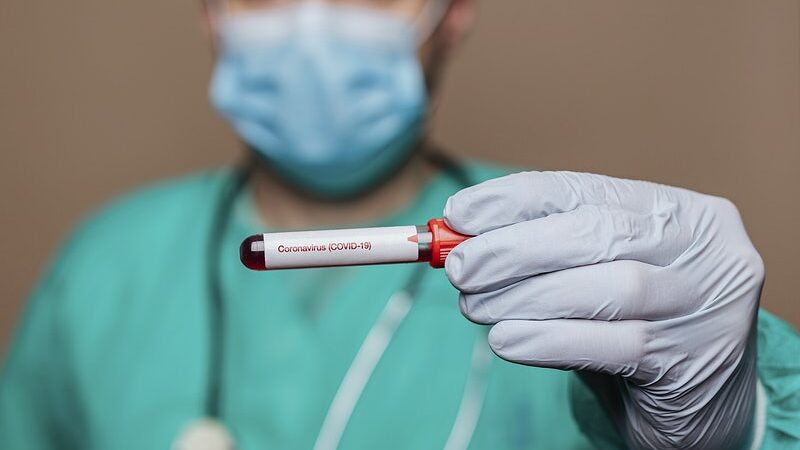Tests aren't always done right.

Two explanations dominated the government’s descriptions of its policies about Covid-19 last week, “science” and “common sense”.
“Guided by the science” is of course a long-term usage – something ministers increasingly appear to regard as the equivalent of Abracadabra in a fairy tale, opening the escape door from something they either can’t, or don’t want, to explain.
“Common sense”, however, is a relatively new rhetorical tic, brought in by Boris Johnson to explain a way forward gaps and contradictions in government advice, and handily taking responsibility away from the government and giving it to the public.
But what does it mean, and how can the government reconcile the potential conflict between the two approaches?
I spent quite a bit of past week on the subject of testing, particularly the swab testing for infection, a concern driven by many people contacting me to share their experiences, particularly about negative results that didn’t match clinical outcomes.
I’ve been particularly concerned by advice from the government about what to do if you have a negative test, but are still experiencing symptoms.
The formal government advice from the government, as contained in the Our Plan to Rebuild says:
“Anyone with symptoms should isolate immediately, alongside their households, and apply for a test. If a negative test is returned, then isolation is no longer required.” (my emphasis)
But when I asked Baroness Evans of Bowes Park in the House about this, her response was unequivocally the reverse of the official advice.
If people have symptoms, they should of course self-isolate, along with their household. … it is absolutely imperative that everybody puts their health, and the health of everyone around them, first.
Her tone was dismissive – and I understand that. It almost seems like a silly question, except that it is based on the official government advice.
When I asked a similar question of Lord Bethell of specifically about what staff in care homes should do after a negative test, when NHS staff were being told to stay home, however, I got the opposite answer.
The rules were different in “normal workplaces” he said, it being clear from the context he meant care homes, although he did not look very comfortable about the answer. Which I also understand, given the dreadful Covid-19 toll in nursing homes already.
What does all of this, concretely mean, to say a care worker here in Sheffield? Let’s call her Anastazja.
Anastazja has worked through the epidemic, with all the stress and worry about her patients – there’s coronavirus in the home where she works and have been deaths, and the risk of bringing the virus home to her family.
She’s juggled shifts with her husband, a bus driver who’s also working and worried about infection, and caring for their daughter, trying to help her keep up her education.
Then Anastazja develops a cough. Luckily tests have been opened for her now, and she drives over to Doncaster, although she’s worried that she had to do the test herself, a security guard having thrown it through the car window to her.
In the meantime she tries to self-isolate at home, although it isn’t easy to do childcare from isolation when her husband is at work, and relying on statutory sick pay makes an already tight budget almost impossible.
Several days later, the test comes back negative, but Anastazja still has a cough.
She looks up the official government advice, and there it is in black and white, “isolation is no longer required”.
So Anastazja listens to the government, and goes with a “common sense” understanding is that a negative test means you don’t have the disease being tested for. She’s following Lord Bethell’s advice.
She goes back to work. Some of her patients, and fellow staff, catch the disease from her. The reproduction rate of the virus goes up.
This story could be different. Explaining the false negative rate, and following the NHS advice to its own staff, could be provided to the general public.
A government that trusted its people, that understood the science itself and was not seeking to boil advice down to simple, election-style slogans, could in a video of a couple of minutes explain the reasons for the false negatives, as an expert did in an all-peers briefing last week.
While the test is near 100% accurate in the lab, the swabbing might not be done correctly, the sample might not be properly handled, or the virus might have moved deeper into the lungs and not be present at the test site. All clear and understandable, not (mostly) anyone’s fault, the inevitable way that medicine works in the real biological world.
This would be an explanation that people can work with – not a vague, and frightening, exhortation to “stay alert”, for a virus that you cannot see.
Relying on individual or collective “common sense” is dangerous. What the government needs to do is rely on the real science, not a magical version of it, and explain it to the public so that they can do so also.
And with huge resources being poured into testing, with the announcement of its increased availability yesterday, it needs to be done, and used, correctly. Otherwise all of that effort is little more than an elaborate performance of action, and the virus will continue its spread.
Natalie Bennett is a former leader of the Green Party of England and Wales. She is a contributing editor to Left Foot Forward
To reach hundreds of thousands of new readers we need to grow our donor base substantially.
That's why in 2024, we are seeking to generate 150 additional regular donors to support Left Foot Forward's work.
We still need another 117 people to donate to hit the target. You can help. Donate today.



